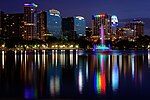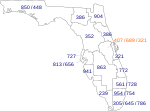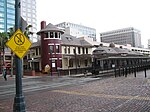Orlando City Hall
1992 establishments in FloridaBuildings and structures in Orlando, FloridaCity and town halls in FloridaFlorida building and structure stubsGovernment buildings completed in 1992 ... and 1 more
Postmodern architecture in Florida

Orlando City Hall is the headquarters of the City of Orlando government. The downtown city hall is a 9 floor, postmodern building constructed by Lincoln Property Company and completed in 1992. The building is located in downtown Orlando at the CNL Center City Commons building complex, on the corner of South Orange Avenue and South Street. Construction of the $32 million city hall was overseen by assistant city attorney Lew Oliver and was financed with revenue bonds.The previous eight-story city hall building was blown up in the opening scene of Lethal Weapon 3.
Excerpt from the Wikipedia article Orlando City Hall (License: CC BY-SA 3.0, Authors, Images).Orlando City Hall
South Orange Avenue, Orlando
Geographical coordinates (GPS) Address External links Nearby Places Show on map
Geographical coordinates (GPS)
| Latitude | Longitude |
|---|---|
| N 28.53759 ° | E -81.379596 ° |
Address
Orlando City Hall
South Orange Avenue 400
32801 Orlando
Florida, United States
Open on Google Maps











